It is that time of year when Microsoft ships a new feature update for its operating system. Version 24H2 has spent quite a lot of time in the company’s ovens and is now very close to its public release. It is not the biggest release the operating system has ever received, but there are still quite a few interesting changes and improvements.
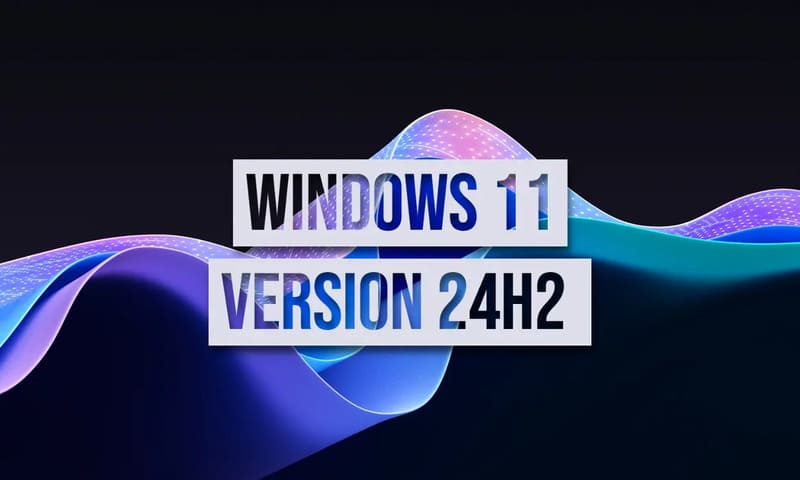
Although some of the most exciting changes are exclusive to Copilot+ PCs, “regular” computers with Intel and AMD processors are not left behind.
| Windows 11 2024 Update (24H2) | |
|---|---|
| Build Number | 26100 |
| Release date | September or October 2024, TBA |
| How to get the update | Follow this guide |
| Hardware changes | Yes, both official and unofficial |
For reference, here are quick links to our reviews detailing every feature update Microsoft released for Windows 11 during the last two years:
Windows 11 22H2 | Moment 1 | Moment 2 | Moment 3 | Windows 11 23H2
What is new in Windows 11 version 24H2?
Table of contents:
- More confusion
- Taskbar and Start menu
- Context menus
- File Explorer
- Settings
- Copilot+ PC exclusive features
- Other changes
- Hardware changes
Windows 11 is confusing
Writing this review was a bit tricky, just like trying to understand what the heck is going on with Microsoft’s strategies and branding. With every review, I complain about how confusing Windows 11’s naming is. With Windows 11 24H2—or whatever Microsoft is going to call it—things are getting even more confusing.
For starters, did you know that Windows 11 version 24H2 was released about three months ago, but you still cannot get it? That is because it is only available on Copilot+ PCs with ARM processors. “Traditional” systems with Intel and AMD (and older ARM chips) are still on Windows 11 version 23H2. They are getting version 24H2 later this month or in October.
Microsoft is also done with its “Moments” system. We no longer have one or two yearly feature drops. Now, every cumulative update Microsoft ships contains a thing or two from Windows Insiders builds. Therefore, it isn’t easy to keep track of what features are available right now and what features are coming with Windows 11 version 24H2 (most likely, I missed a bunch in this overview). And even after installing version 24H2, you may not have all the features as they are often rolling out gradually. You know, you never know…
With the rant over, let’s get to the new stuff.
Taskbar, Start menu, and Copilot
Simplified taskbar
If you are a fan of minimalism, you will be glad to know that with Windows 11 version 24H2, the taskbar, especially the tray area, can now display fewer buttons. No, battery, volume, and network indicators are still a single button, but at least you can switch to a simplified system clock and toggle off the notification bell.

Another small change in this area is that the option to enable or disable tray clock seconds now exists in Settings > Time & Language > Date & Time > Show time and date.
Quick Settings menu
Microsoft changed how the Quick Settings menu works. Instead of showing select toggles, it now displays all available options in a scrollable view. While you can rearrange those buttons to keep favorites on one page, it is no longer possible to remove toggles you do not use.
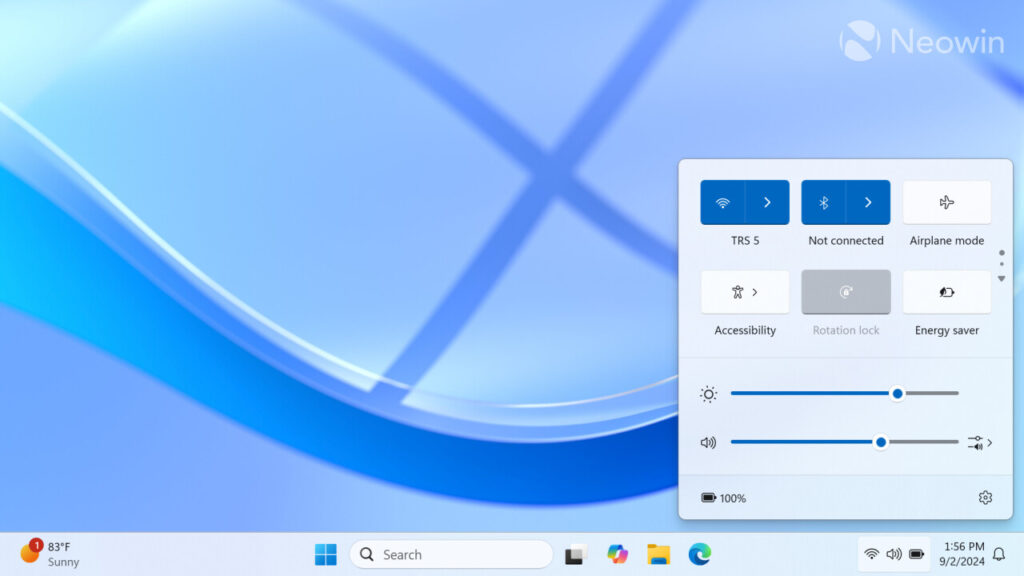
Start menu
The biggest change in the Start menu is the new Phone Link integration. There is now a big new panel next to the Start menu showing useful information about your phone and a few useful links, such as recent messages, photos, battery indicators, and more. It is a nice addition for Phone Link users with Android smartphones, making your phone just one button away.
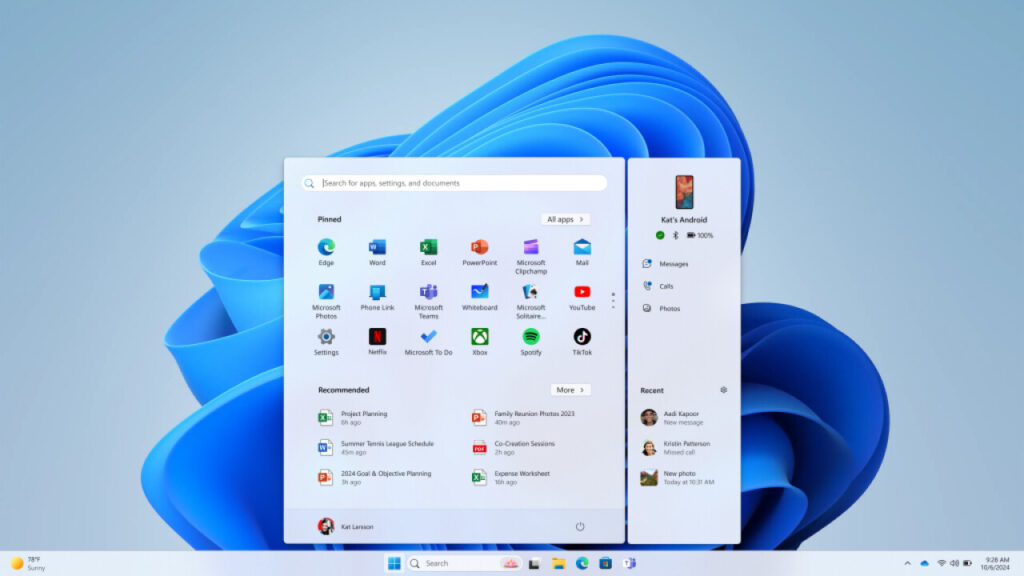
Apart from the Phone Link panel, Windows 11 version 24H2 does not contain major Start menu changes except for a small folder in the “Recommended” section, where you can access recently added apps. Say you installed five new applications, and instead of looking for them in the All Apps list, you can just click the “Recently Added” folder. The “Recommended” action finally contains some useful bits.
Copilot
In my Windows 11 version 23H2 review, I hoped to see better integration of Copilot into the operating system. Microsoft shipped it with a limited set of integrations, so imagine my surprise when I saw that those integrations were now simply gone. Copilot can no longer do even basic things like turning on Do not disturb mode or dark mode. Instead of just, you know, doing it, it lists instructions on how to do that.
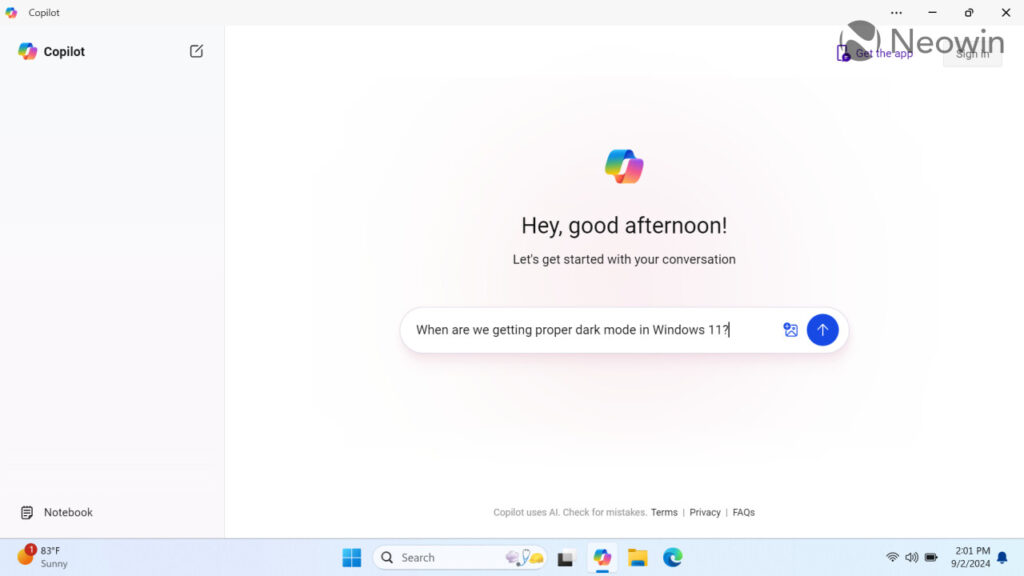
When I explicitly asked what settings Copilot could change on my PC, it just listed all the Windows features that I could change in the Settings app. What? When I asked more specifically, Copilot confirmed that it can only guide me through changing various settings. Do not get me wrong; this makes sense and is useful, but it just feels cheap, lazy, and unprofessional. Microsoft could have done a much better job integrating Copilot into Windows, especially after laying some groundwork in version 23H2.
On the positive side, I guess, Copilot now behaves as a standalone windowed application, which you can easily move around your taskbar, unpin, minimize, resize, and more. Overall, in Windows 11 version 24H2, Copilot evolved, just backward. If you also now find it useless, feel free to uninstall it, which is now possible. Thanks, Microsoft.
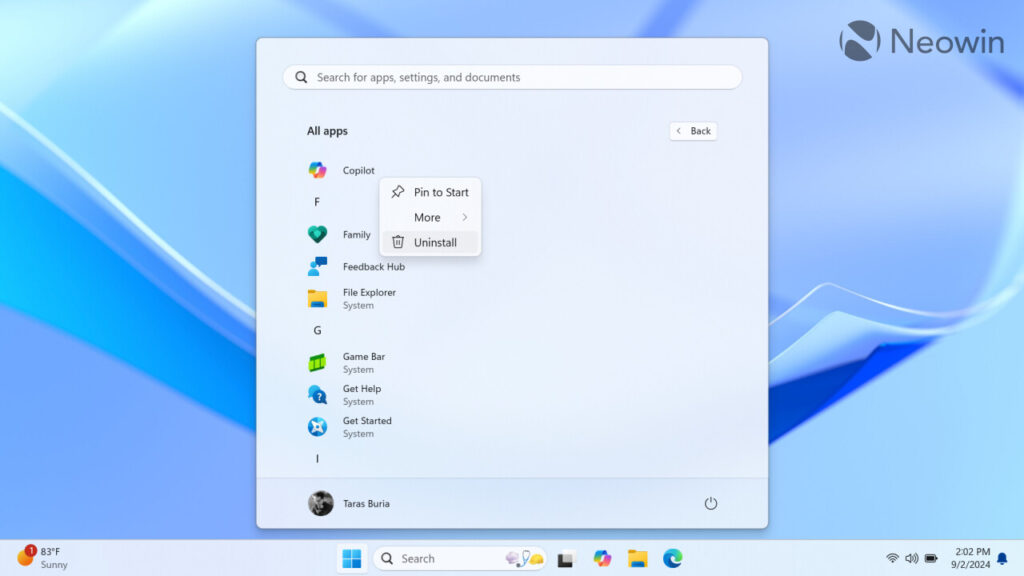
Context menus
Ah, yes, the context menus. Still buggy and slow, but at least Microsoft finally addressed a major problem and added labels to common file actions, such as cut, copy, paste, share, rename, and delete. This is a big change that should make it easier for Windows 11 newcomers to understand how to use the operating system’s context menus.
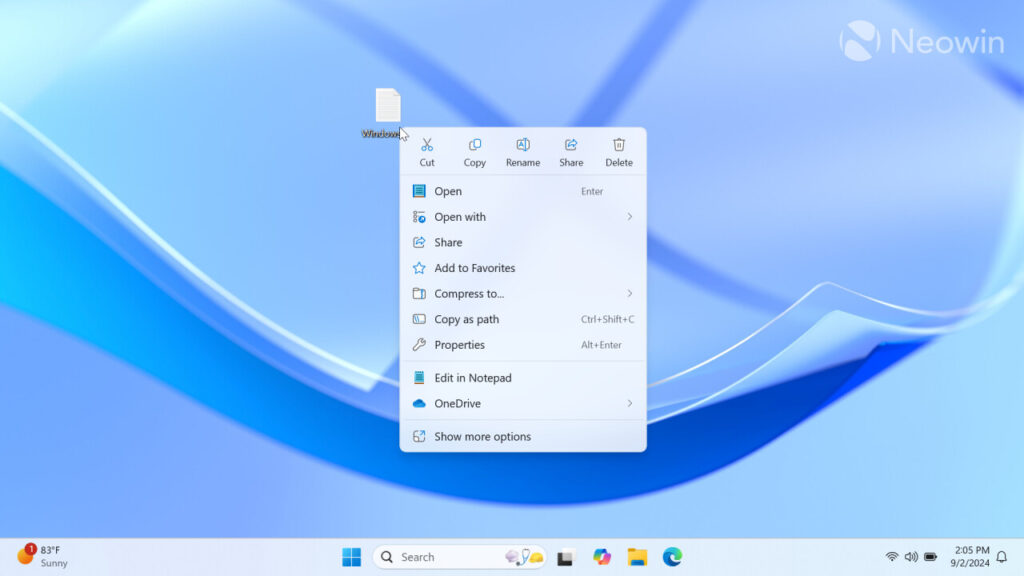
Sadly, Microsoft still does not know that there are languages other than American English, which is why many localizations suffer from absolutely abominable and borderline unusable machine translation, text truncation, and other issues. And it is not just me ranting about awful cropping in Ukrainian localization—ask Britons how they like compressing to postcode files.
File Explorer
Windows 11 users with Android phones now have another great convenience—the ability to browse their phones’ file systems directly in File Explorer. If you need to copy a file, just go to File Explorer and click your device in the navigation pane.
Version 24H2 also contains several File Explorer improvements, which are also now available in 23H2. For example, you can now duplicate File Explorer tabs and compress files to additional archive formats, not just ZIP. TAR and 7Z are now supported, plus you can customize additional options, such as compression ratio and algorithm.
Settings
Lid and Power Button settings
Another thing that no longer requires using the legacy Control Panel or the Windows Registry is what happens when you close your laptop’s lid or press the power button. These options are now located in Settings > System > Power & Battery.
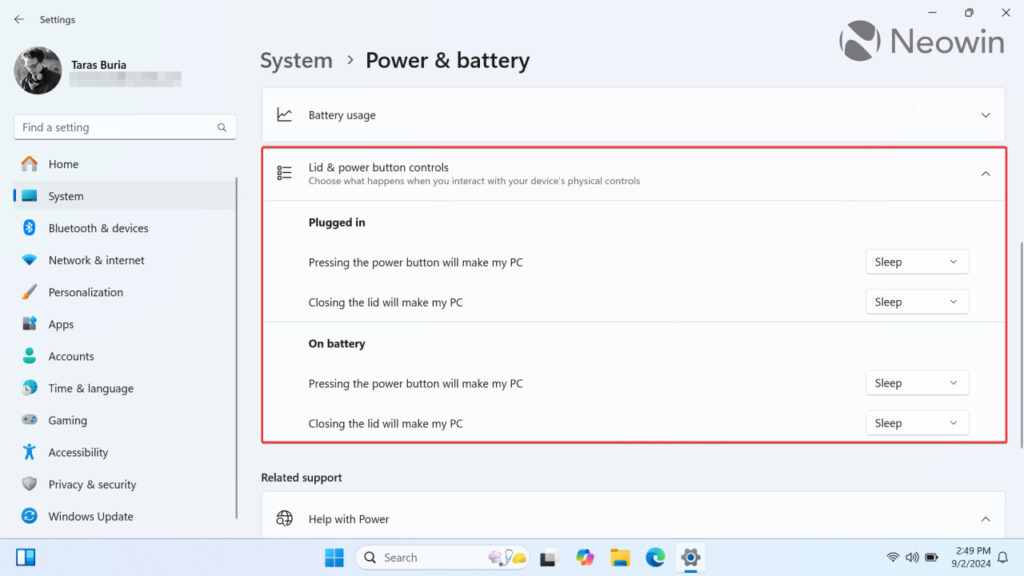
Naturally, lid settings are only available on computers with lids (laptops, duh), while the power button customization is also present on traditional desktop computers.
Energy plans
Windows 11 version 24H2 now lets you set separate power plans when connected to power and when working from the battery.
Energy saver
Microsoft reworked the Energy saver feature, and it claims it is now more efficient. Also, Energy saver is now available on desktop PCs for environment-conscious users.
Color management
There is a new settings section where you can add color profiles, change color management options, calibrate your display, and more. Previously, all those options required digging into the old Control Panel.
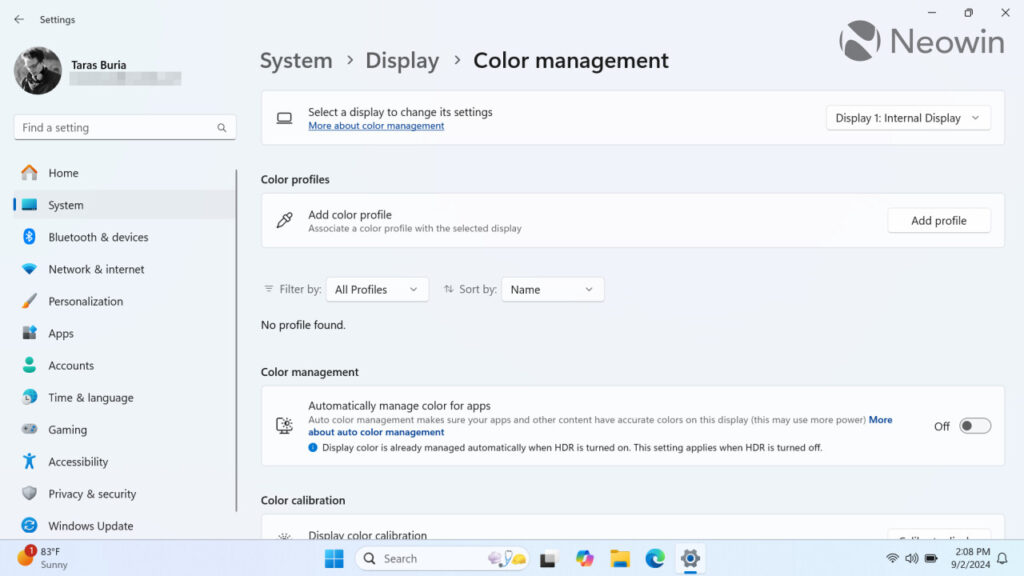
Copilot+ PC exclusive features
Windows 11 version 24H2 on Copilot+ PCs features several exclusive features that are not available on other systems. Here they are:
- Windows Studio Effects can improve lighting, smooth your skin, blur the background, keep you in the frame, correct eye contact, and make other changes to make you look better during video calls.
- Live Captions generate subtitles in real-time for any audio playing from any app on your computer.
- Paint Cocreator allows generating images from your doddles in Paint.
- Image generation in the Photos app uses your prompts to create AI-made images.
- AutoSR upscales graphics in games and generates frames for a better gaming experience.
The highlight of Copilot+ PCs is the controversial Recall feature, but we are not talking about it yet because it will only come back to Windows Insiders in October 2024. It is not available right now, so there is nothing to review.
Other changes
Voice Clarity
Voice Clarity used to be a feature exclusive to devices with Neural Processing Units, such as the Surface Pro 9 5G or the latest Copilot+ PCs. However, Microsoft optimized the AI model for Voice Clarity, which resulted in a much smaller performance impact. Therefore, Voice Clarity now works on traditional x86 PCs with Intel and AMD processors.
For reference, Voice Clarity can suppress background noise to make you sound better during video calls.
Dev Drive performance improvements
Developers will appreciate file system performance upgrades in Windows 11 version 24H2, which now supports Block Cloning on Dev drives. In some scenarios, block cloning can almost double the speed of copying large files.
Windows Hotpatching
Windows 11 version 24H2 brings hotpatching from Server editions to regular users. In a nutshell, Windows 11 now installs updates through smaller, incremental differentials, saving you time, bandwidth, and disk space. Also, hotpatching lets you install certain updates without restarting your computer, which is handy in a world where literally everybody hates Windows updates.
HDR wallpapers
If you have an HDR-capable monitor, you can now use JXR images for some sweet high-dynamic-range wallpapers. Speaking of wallpapers, Windows Spotlight is now your default desktop background. However, only if you clean-install version 24H2 or update from a system with the default “Bloom” wallpaper.
Removed and deprecated apps
Windows 11 version 24H2 removes several stock applications that are now deprecated or plain discontinued. They include WordPad (this one is recoverable, so click here if you want to know more), Cortana (no surprise here), the old Mail and Calendar app (replaced with the horrid web-based Outlook for Windows, which is universally considered a very bad solution), Maps, People, and Movies & TV.
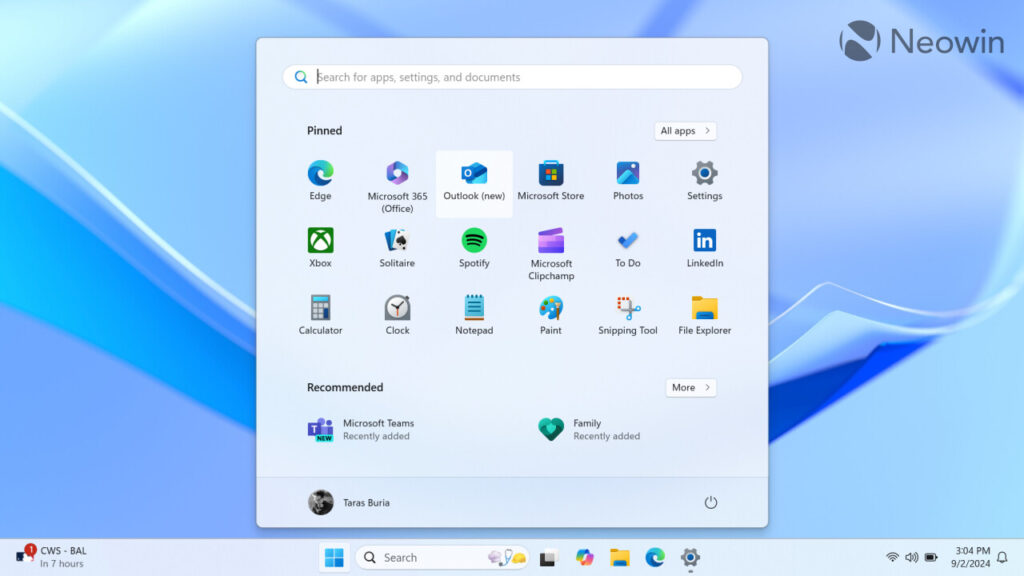
Hardware requirements changes
Overall, Windows 11 still requires a computer with a seventh-generation Intel processor or a second-generation AMD Ryzen processor (and newer), a Trusted Platform Module (TPM), and Secure Boot—nothing new here. What is new is that the newest AI-powered features require a Copilot+ PC with a Snapdragon X processor and a dedicated NPU.
There are some changes for those who want to run Windows 11 version 24H2 on unsupported hardware. The operating system can no longer run on very old computers without the SSE4.2 instruction set. Even after bypassing hardware requirements, you will have no luck since the OS won’t boot.
Also, kiss goodbye to running Windows 11 on the original Windows on ARM devices with ARM v8 processors. From now on, ARM v8.1 is a minimum requirement, which means the Snapdragon 835 can no longer officially run Windows 11. It never could, but it is still possible to run Windows 11 23H2 and older on very old Windows on ARM computers after bypassing hardware requirements.
Some positive news: Wi-Fi 7 is now officially supported. Therefore, if you plan to purchase a Wi-Fi 7 network card and a corresponding router, Windows 11 version 24H2 is for you.
Other than that, Windows 11 version 24H2 does not bring anything new to the table spec-wise. If you have a relatively modern computer (even an unsupported one) with Windows 11, you will most likely be able to run Windows 11 24H2 without any groundbreaking changes.
I did not notice any performance difference when testing Windows 11 24H2 on my desktop computer with the Ryzen 5 5600X, 32GB of RAM, and the RX 7800 XT. On my old laptop with an 11th-generation Intel Core i3 and 16GB of RAM, Windows 11 24H2 also performed just like version 23H2, so it’s all good. Of course, your experience may vary depending on the specific software/hardware combination.

Overall, Windows 11 version 24H2 leaves lukewarm impressions. The operating system has become better here and there, but Microsoft has not addressed most of the biggest complaints. The Start menu is still meh, the dark mode is still a joke (there is no way to even auto-switch between light and dark mode), and Windows 10 still feels faster than its three-year-old successor. But for those who got accustomed to Windows 11 and left Windows 10 behind, version 24H2 will be a decent update that at least should not make things worse on the grand scale. Personally, I am okay with that.

